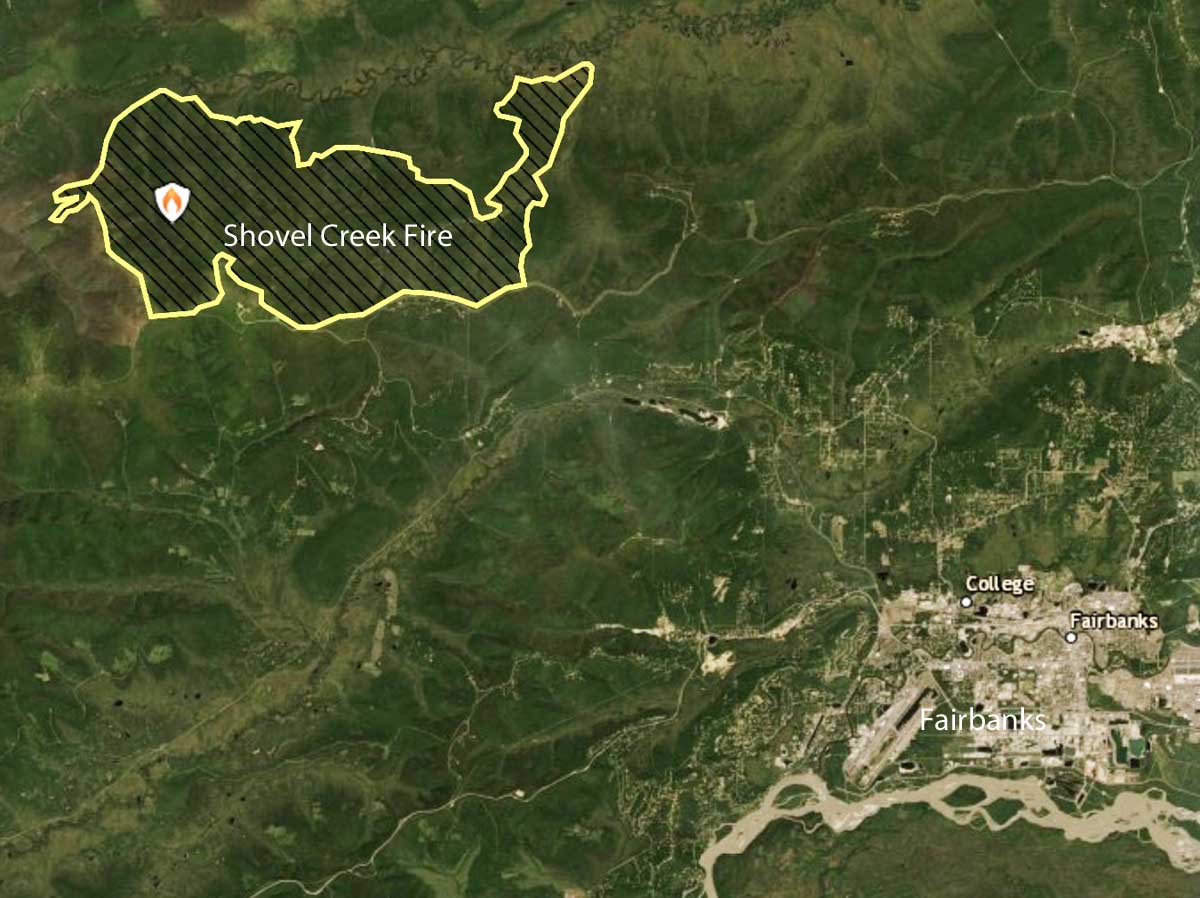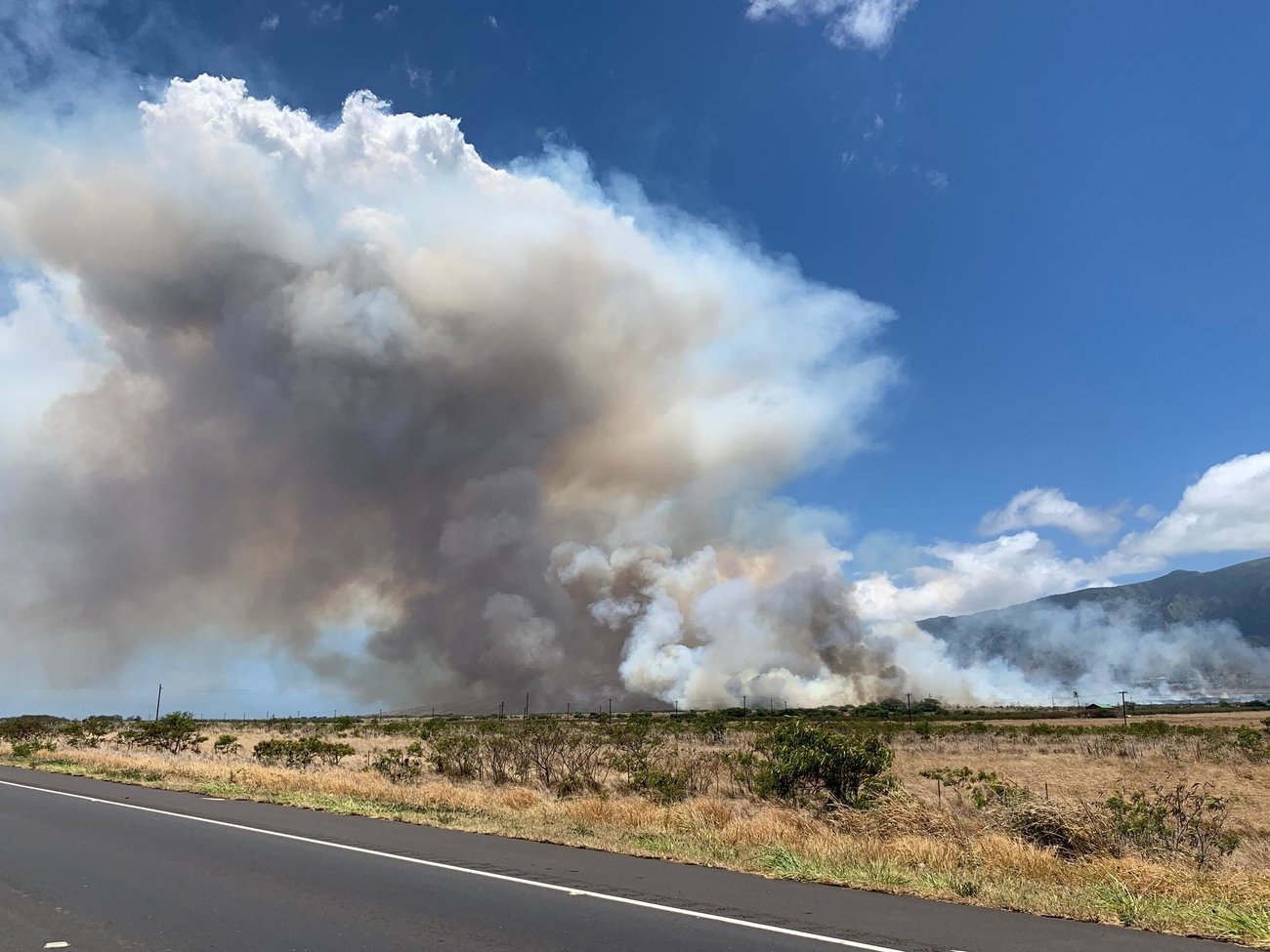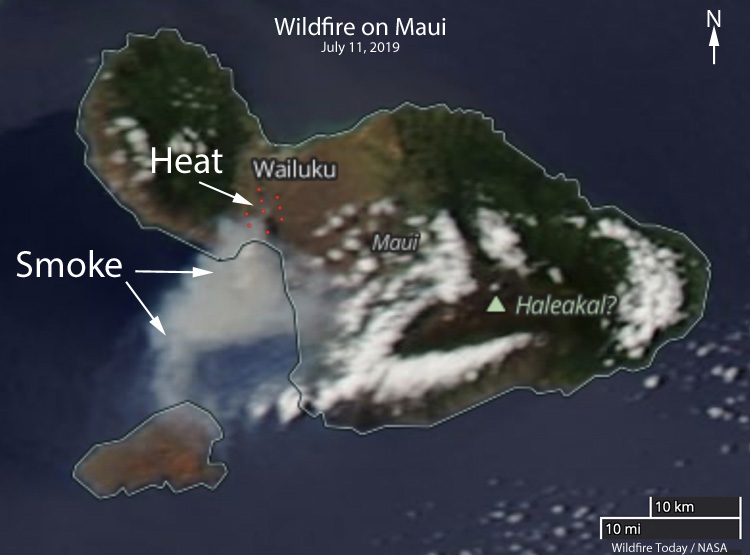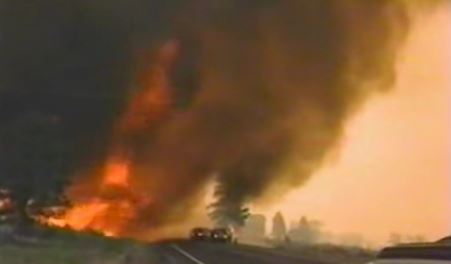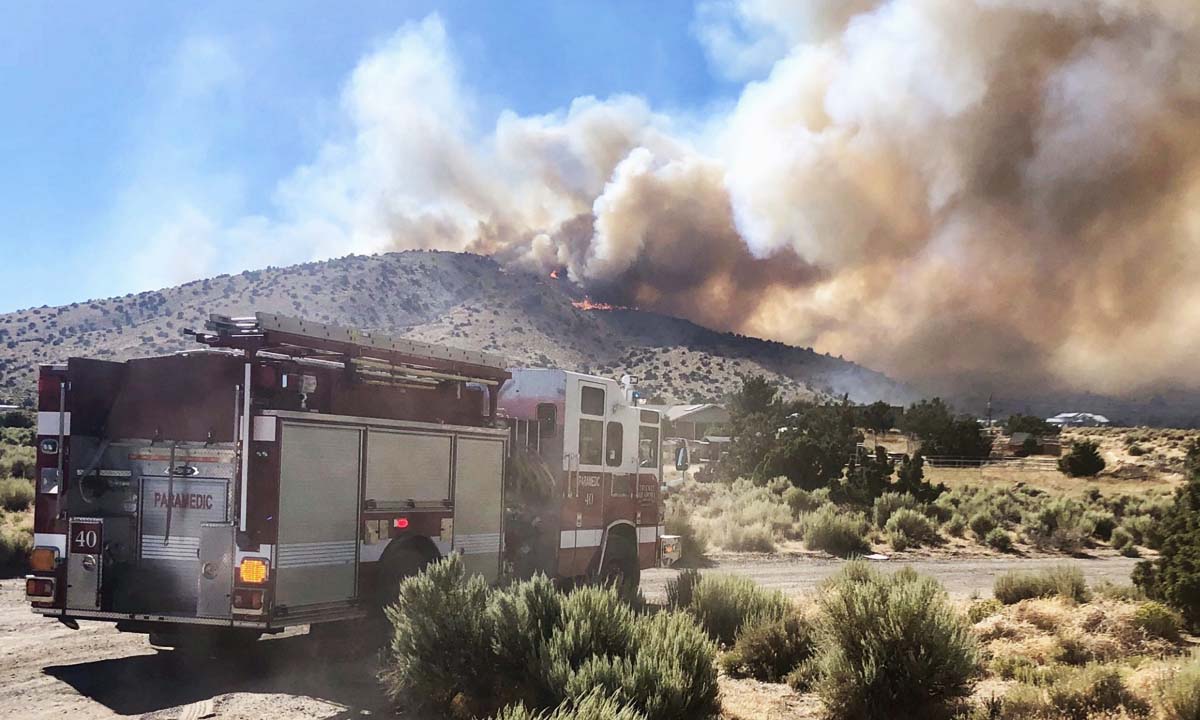
Four new wildfires broke out in the Great Basin Geographic Area late Saturday, two each in Idaho and Nevada.
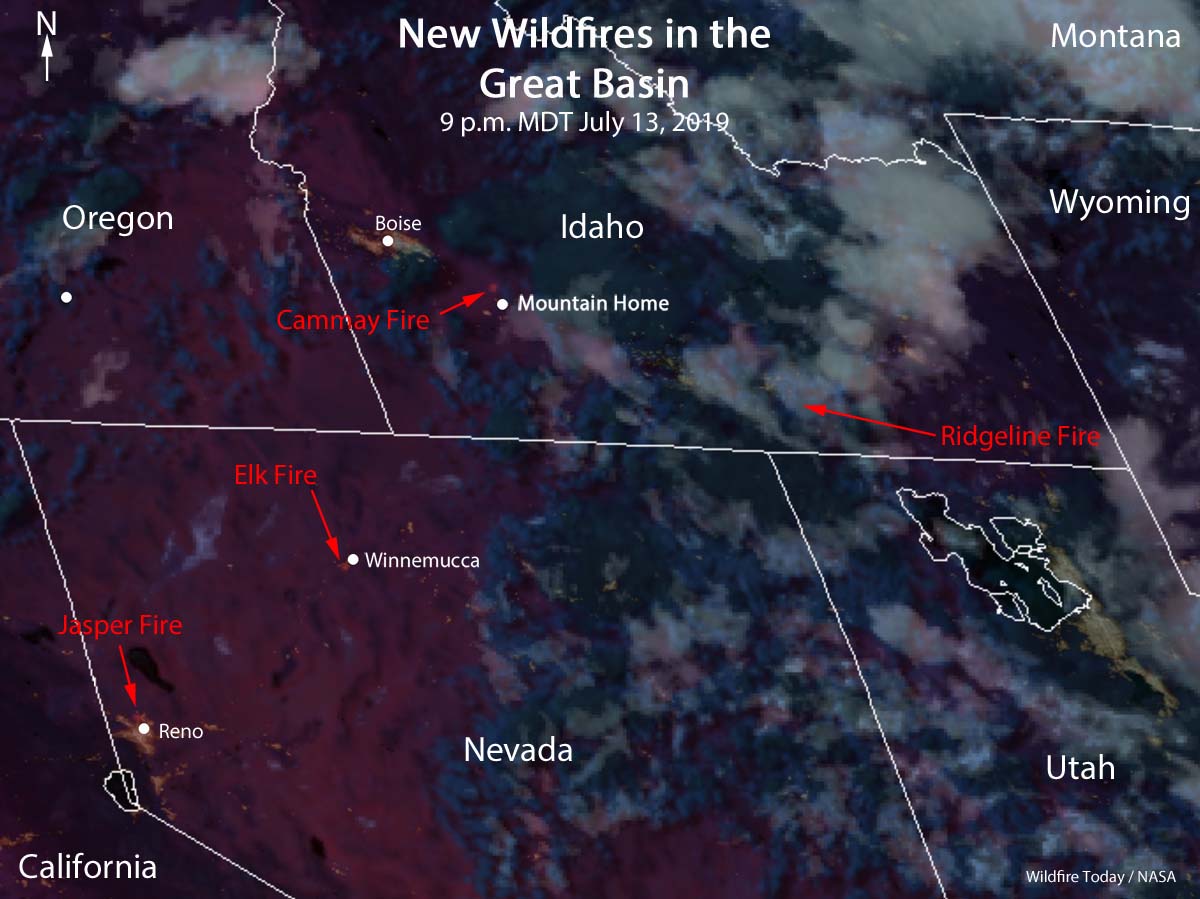
Jasper Fire
The Jasper Fire was reported at about 3 p.m. north of Sun Valley, Nevada. The Washoe County Sheriff’s Office asked for voluntary evacuations in the Sun Valley area as the fire reached Eagle Canyon Drive. The Truckee Meadows Fire Protection District reported that the fire burned about 800 acres. By Sunday morning the blaze was producing very little smoke, but at least one outbuilding was destroyed Saturday.
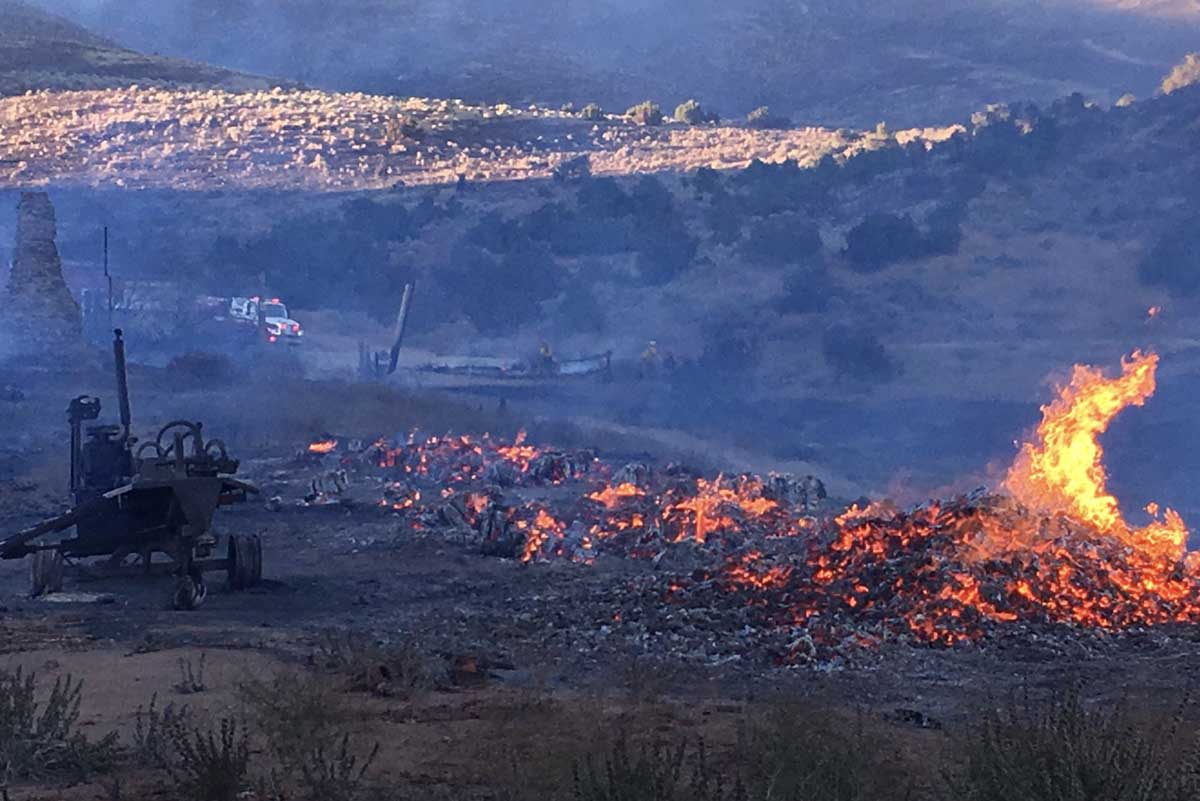
Washoe County Sheriff Darin Balaam said Alex Javier Arias, 23, and Jorge Arias, 22, were arrested for starting the fire by target shooting into cheat grass. They could be charged with destruction of property caused by fire through gross negligence which is a felony, Sheriff Balaam said.
#JasperFire impacting areas north of Sun Valley to Eagle Canyon Road, west side of Pyramid Highway. We are asking citizens to not pull over to watch. Please stay out of the way for first responders. @blmnv @SparksFireDept @cityofsparks @washoecounty pic.twitter.com/ubde76RDSK
— Truckee Meadows Fire Protection District (@TMFPD) July 13, 2019
Air tankers and helicopters assisted firefighters, including at least one air tanker, Tanker 88, from CAL FIRE.
A Type 3 Incident Management Team, Sierra Front with Incident Commander Stephenson, was scheduled to in-brief at 6 a.m. Sunday, according to @GreatBasinCC.
Ridgeline Fire
As of Saturday evening the Ridgeline Fire, 5 miles northeast of Albion, Idaho had burned about 1,000 acres and was running and spotting in juniper and brush. It was being fought by firefighters on the ground assisted by four Single Engine Air Tankers and a DC-10.
The impressive video below of a DC-10 dropping was tweeted by @BLMIdahoFire July 13, 2019 but they did not say when or where it occurred. It may have been at the Ridgeline Fire 5 miles northeast of Albion, Idaho the same day.
#BLMTFDFire evening fire update visit:https://t.co/WLpfk6gqkH pic.twitter.com/lvVx4rk6IC
— Bureau of Land Management Idaho Fire (@BLMIdahoFire) July 14, 2019
Elk Fire
The Elk Fire burned about 30 acres south of Winnemucca, Nevada.
Canmay Fire
The Canmay Fire, 8 miles north-northwest of Mountain Home, Idaho started on Bureau of Reclamation land eight miles northwest of Mountain Home, ID. Saturday evening it was running, flanking, and creeping through brush and short grass and had burned about 2,000 acres.
The weather forecast
The weather forecast for Sunday on the Jasper, Elk, and Canmay Fires are all about the same — temperature in the 90s with wind speeds over 10 mph. It will be a little cooler on the Ridgeline Fire with the temperature in the 80s, and winds less than 10 mph.





